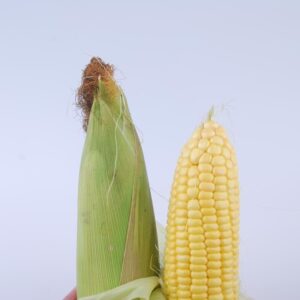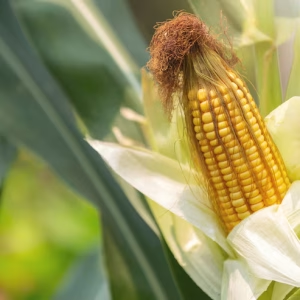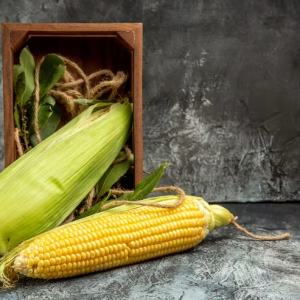Introduction to Finger Millet Varieties
In the age of clean eating and ancient grains making a comeback, finger millet—also known as ragi—is taking center stage for its exceptional health benefits, adaptability to different climates, and sustainable farming potential. But did you know that there are multiple varieties of finger millet, each with its own unique nutritional profile, color, and use?
Whether you’re a consumer seeking healthier grains, a farmer interested in cultivating finger millet, or a food brand exploring traditional superfoods, understanding the different varieties of finger millet can help you make more informed choices.
This blog explores the different varieties of finger millet, detailing their characteristics, nutritional profiles, uses, and why CMS Industries’ premium ragi is the ideal choice for unlocking their potential. From traditional to modern applications, ragi’s diversity makes it a dietary staple worldwide.
What Is Finger Millet (Ragi)?
Finger millet (Eleusine coracana) is an ancient cereal crop cultivated widely in Asia and Africa, particularly in India, Nepal, Uganda, and Ethiopia. In India, it is commonly known as ragi (Kannada, Telugu, Tamil) or mandua/nachni (Hindi and Marathi). It gets its name from the arrangement of its spikelets that resemble fingers on a hand.
Known for its high calcium, iron, fiber, and amino acid content, finger millet has become a modern-day super grain, loved by health enthusiasts, fitness professionals, and nutritionists alike.
Importance of Understanding Finger Millet Varieties
Finger millet is not a one-size-fits-all grain. Its many varieties differ in:
- Color (white, brown, red, black)
- Grain size and yield
- Nutritional content
- Resistance to pests and diseases
- Cooking uses and culinary value
Choosing the right variety depends on your purpose, whether it’s for cultivation, consumption, processing, or commercialization.
Why Explore Finger Millet Varieties?
Finger millet exists in multiple varieties, each with distinct traits like grain color, growth cycle, and nutritional content. These differences influence their suitability for specific diets, culinary applications, and agricultural conditions. Understanding these varieties helps consumers choose the right ragi for health needs (e.g., diabetes management, bone health) and farmers select cultivars for climate resilience.
Let’s dive into the different varieties of finger millet and their unique characteristics.
Major Varieties of Finger Millet
Finger millet varieties are classified based on grain color, growth characteristics, and regional adaptations. Below are the most prominent types, with insights into their properties and uses:
- Brown Finger Millet
- Appearance: Dark brown to reddish-brown grains, the most common variety.
- Nutritional Profile: High in calcium (344mg/100g), iron (3.9mg/100g), and fiber (3.6g/100g). Rich in polyphenols for antioxidant benefits.
- Uses: Ideal for rotis, porridges, and dosas due to its robust flavor and nutrient density.
- Benefits: Supports bone health, anemia prevention, and diabetes management.
- Growing Conditions: Thrives in semi-arid regions, drought-resistant, and adaptable to poor soils.
CMS Advantage: Our brown ragi is nutrient-packed, perfect for traditional Indian dishes.
- White Finger Millet
- Appearance: Light cream or white grains, less common but valued for aesthetics.
- Nutritional Profile: Slightly lower calcium (300mg/100g) but higher protein (8-9g/100g). Good source of magnesium and B vitamins.
- Uses: Used in baby foods, baked goods, and snacks for its mild flavor and smooth texture.
- Benefits: Enhances energy levels and supports infant nutrition due to easy digestibility.
- Growing Conditions: Prefers moderate rainfall and fertile soils, less drought-tolerant.
CMS Advantage: Our white ragi is ideal for health-conscious recipes and child nutrition.
- Red Finger Millet
- Appearance: Deep red grains, rich in anthocyanins (antioxidant pigments).
- Nutritional Profile: High in antioxidants, iron (4.2mg/100g), and magnesium (140mg/100g). Slightly lower fiber (3g/100g).
- Uses: Preferred for health drinks, malt, and fermented foods like ragi idli for its bold flavor.
- Benefits: Boosts immunity, reduces inflammation, and supports skin health.
- Growing Conditions: Resilient to heat and drought, suitable for arid regions.
CMS Advantage: Our red ragi enhances immunity with its antioxidant-rich profile.
- Black Finger Millet
- Appearance: Dark black or purple grains, rare and nutrient-dense.
- Nutritional Profile: Highest antioxidant content (anthocyanins, ferulic acid), with calcium (330mg/100g) and iron (4mg/100g).
- Uses: Used in specialty foods, health bars, and traditional brews for its intense flavor.
- Benefits: Combats oxidative stress, supports heart health, and promotes anti-aging.
- Growing Conditions: Requires specific climates, less common due to longer growth cycles.
CMS Advantage: Our black ragi is a premium choice for functional foods.
- Yellow Finger Millet
- Appearance: Yellowish grains, often a hybrid or regional variant.
- Nutritional Profile: Balanced nutrients with calcium (310mg/100g), fiber (3.5g/100g), and protein (7.5g/100g).
- Uses: Suitable for porridges, snacks, and gluten-free baking for its mild, versatile taste.
- Benefits: Supports digestion, weight management, and sustained energy release.
- Growing Conditions: Adaptable to varied soils, moderately drought-resistant.
CMS Advantage: Our yellow ragi is perfect for modern, gluten-free recipes.
- High-Yielding Varieties (HYVs)
- Appearance: Varies (brown, red, or white), bred for higher grain output.
- Nutritional Profile: Comparable to traditional varieties but optimized for consistency (e.g., 340mg/100g calcium, 3.8mg/100g iron).
- Uses: Used in commercial food production, including flour, cereals, and snacks.
- Benefits: Ensures food security with high yields while maintaining health benefits.
- Growing Conditions: Engineered for resilience, suitable for large-scale farming.
CMS Advantage: Our HYV ragi supports bulk production without compromising quality.
Nutritional Comparison of Finger Millet Varieties
While all ragi varieties are nutrient-rich, their profiles vary slightly:
| Variety | Calcium (mg/100g) | Iron (mg/100g) | Fiber (g/100g) | Antioxidants |
| Brown | 344 | 3.9 | 3.6 | Polyphenols |
| White | 300 | 3.5 | 3.2 | Moderate |
| Red | 330 | 4.2 | 3.0 | Anthocyanins |
| Black | 330 | 4.0 | 3.4 | High Anthocyanins |
| Yellow | 310 | 3.7 | 3.5 | Polyphenols |
| HYVs | 340 | 3.8 | 3.5 | Varies |
Key Takeaways:
- Brown: Highest calcium, ideal for bone health.
- Red/Black: Richest in antioxidants, best for immunity and anti-aging.
- White: Highest protein, great for child nutrition.
- Yellow/HYVs: Balanced for versatility and scalability.
Health Benefits of Finger Millet Varieties
Each variety contributes unique health benefits:
- Bone Health: Brown and HYV ragi’s high calcium supports strong bones.
- Heart Health: Red and black ragi’s antioxidants reduce cholesterol and inflammation.
- Diabetes Management: All varieties’ low GI stabilizes blood sugar.
- Anemia Prevention: Red and brown ragi’s iron combats fatigue.
- Digestion: Yellow and brown ragi’s fiber promotes gut health.
- Immunity: Black and red ragi’s antioxidants boost resilience.
- Weight Loss: White and yellow ragi’s fiber aids satiety.
- Skin/Hair: Red and black ragi’s antioxidants enhance beauty.
- Energy: White ragi’s protein fuels active lifestyles.
- Sustainability: All varieties support eco-friendly diets.
Culinary Uses of Finger Millet Varieties
Each variety shines in specific dishes:
- Brown Ragi: Rotis, porridges, dosas for robust flavor.
- White Ragi: Baby foods, cookies, cakes for mild taste.
- Red Ragi: Malt, idlis, health drinks for bold flavor.
- Black Ragi: Health bars, brews, specialty snacks for intensity.
- Yellow Ragi: Snacks, porridges, gluten-free baking for versatility.
- HYVs: Commercial cereals, flours, and processed foods.
Why Choose CMS Industries for Finger Millet?
As a trusted supplier, CMS Industries delivers quality and sustainability:
- Premium Quality: Our ragi is tested for purity and nutrient content.
- Sustainable Sourcing: We support eco-friendly farming, minimizing environmental impact.
- Global Reach: Efficient supply chains deliver fresh ragi worldwide.
- Customized Solutions: We offer whole grains, flours, and processed products.
- Expert Support: Our team provides recipes and guidance for optimal use.
Agricultural Significance of Finger Millet Varieties
Ragi’s varieties support sustainable farming:
- Drought Resistance: Brown, red, and HYVs thrive in arid conditions.
- Soil Health: Crop rotation with ragi enhances fertility.
- Food Security: High-yielding varieties ensure consistent supply.
- Low Inputs: Minimal water and pesticides reduce costs..
Choosing the Right Variety for Your Needs
- Health Goals: Brown for bones, red/black for immunity, white for kids.
- Culinary Preferences: Yellow for mild flavors, red for bold dishes.
- Sustainability: All varieties align with eco-conscious diets.
- Availability: CMS Industries offers all varieties for diverse needs.
Our expert team helps you select the perfect ragi variety for your diet or business.
The Future of Finger Millet Varieties
Ragi varieties are poised for growth:
- Functional Foods: Incorporated into snacks, cereals, and baby foods.
- Global Demand: Rising in gluten-free and sustainable diets.
- Innovative Breeding: New cultivars enhance yield and nutrition.
- Culinary Trends: Featured in fusion and health-focused recipes.
Conclusion
Finger millet is more than just a grain—it’s a nutritional powerhouse with a wide variety of types catering to diverse dietary and agricultural needs. Whether you’re choosing red bajra millet for its iron, white millet for its digestibility, or black millet for its antioxidants, there’s a finger millet variety to match your purpose.
With rising awareness around health and sustainability, the time has never been better to embrace this traditional super grain. And with quality suppliers like CMS Industries, accessing premium finger millet has never been easier.
Frequently Asked Questions
- What are the main varieties of finger millet?
Finger millet includes brown, white, red, black, yellow, and high-yielding varieties. CMS Industries’ ragi varieties offer unique nutrients, supporting bone health, immunity, and gluten-free diets.
- Which ragi variety is best for diabetes?
Red and brown ragi, with low glycemic indices, stabilize blood sugar. CMS Industries’ ragi varieties support diabetes management, offering fiber and antioxidants for steady energy.
- Is white ragi good for children?
Yes, white ragi’s high protein and mild flavor suit child nutrition. CMS Industries’ white ragi is pure and digestible, ideal for baby foods and snacks.
- Why choose CMS Industries for ragi varieties?
CMS Industries offers sustainably sourced, high-quality ragi, tested for purity. Our diverse varieties support healthy, eco-friendly diets, trusted globally for excellence.
- How can I use red ragi in cooking?
Red ragi is great for malt, idlis, and health drinks. CMS Industries’ red ragi flour adds bold flavor and antioxidants to nutrient-rich, wholesome recipes.





